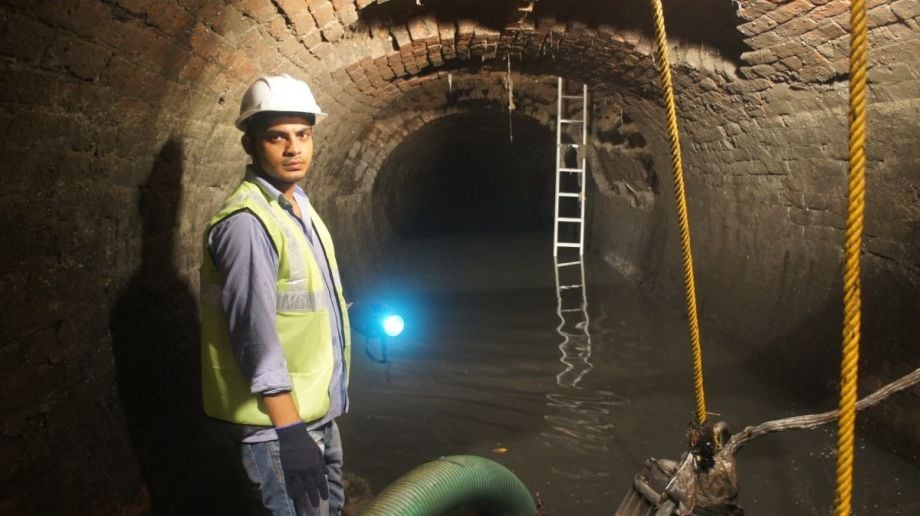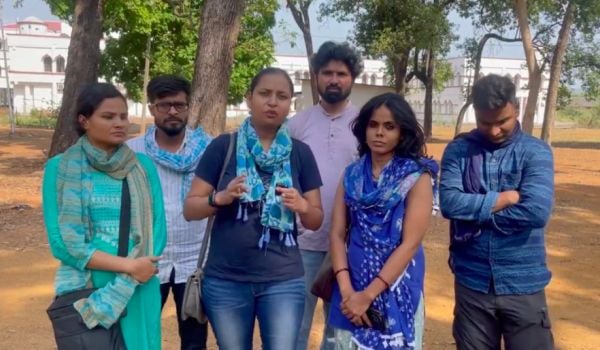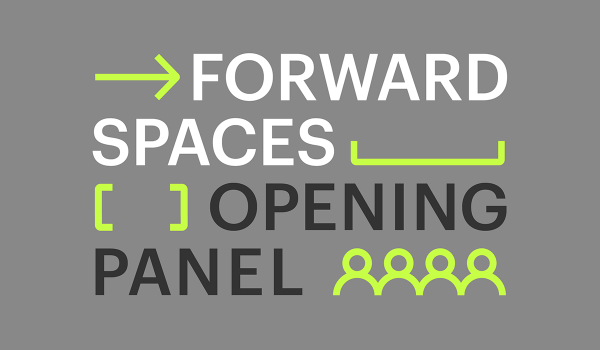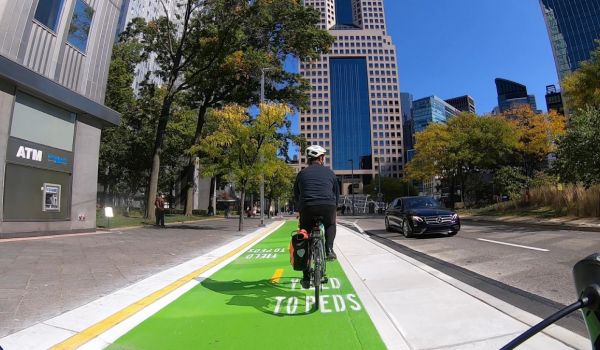Through Kolkata’s punishing midsummer nights, as the rest of the city sleeps, a small strike force of men prowls the city’s putrid underbelly. These days they work right in the heart of south Kolkata, at Gariahat, a bustling junction day and night, dotted with kiosks selling everything from bed sheets to doormats. Wearing helmets, safety jackets and masks, the men shimmy down a six-meter steel ladder to enter a dank, brick sewer tunnel filled with murky water.
I accompanied the team on a recent sultry April night, covered head to toe in safety gear, to get a rare glimpse of one of the many Colonial-era tunnels that criss-cross the city.
Built back in 1875 by the British rulers, this elaborate underground sanitation network in eastern India was, at the time, matched only by the systems in London and Hamburg, Germany. Almost 130 years later, in 2006 and 2007, the Kolkata Municipal Corporation (KMC) began cleaning the tunnels, which had become choked with silt. The task was monumental, but today, the challenge has nearly been met by the KMC engineers and contractors. This small stretch of tunnel in south Kolkata is the final phase of the project.
The first phase entailed refurbishing approximately 26 kilometers of the largest brick sewers. It is expected that once the project ends, the flooding that plagues Kolkata every monsoon will be largely controlled. (The city is often referred to as Venice during the monsoon as boats ferry stranded people through the streets).
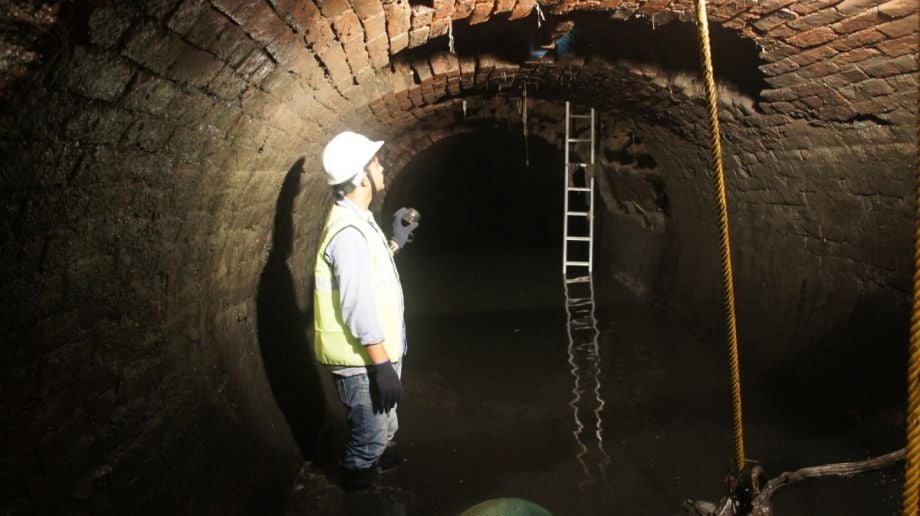
A worker points out structural damage that will eventually be repaired with glass reinforced polymer.
“There is perhaps no other city in the world with such an elaborate tunnel [system],” says Sunil Tytues of WWJV Consultants, the firm overseeing the project. “It is amazing that they built it so large back then, so that it can even sustain now a city of about 22 million people, if the daily visitors to Kolkata are taken into account.”
Despite the system’s capacity, however, it would be considered structurally flawed by today’s engineering standards, in part because of its lack of redundancy. “We have no parallel sewer,” says Tytues. “We do not have storm sewer or sanitary sewer separately like in other cities when you can divert the sewer to one and make the other dry.”
Dr. Nilangshu Bhusan Basu, the principal chief engineer of the KMC’s planning and development department and the team leader on the brick sewer rehabilitation project, explains why. “Kolkata receives an average annual rainfall of more than 1,800 millimeters, mostly during the monsoon. As a result, the system of underground sewers that was subsequently constructed was sized to convey storm water as well as wastewater, and the network of brick sewers remains a combined system to this day.”
Hence, the critical task of keeping that combined network clean – when monsoon season arrives, the waste from the city’s sinks and toilets must compete with the terrific deluge from the sky. The men down here perform their job under grueling conditions. The sharp odor of human waste is so overpowering that removing my mask for just a few seconds made me dizzy. Below my feet I could feel the deep siltation through my thick boots; the workers sometimes wade through this muck through the tunnels for more than a kilometer, forced to navigate the labyrinth in the absence of manholes, which were built by the British every thirty meters, but were later covered over by the unplanned urbanization aboveground.
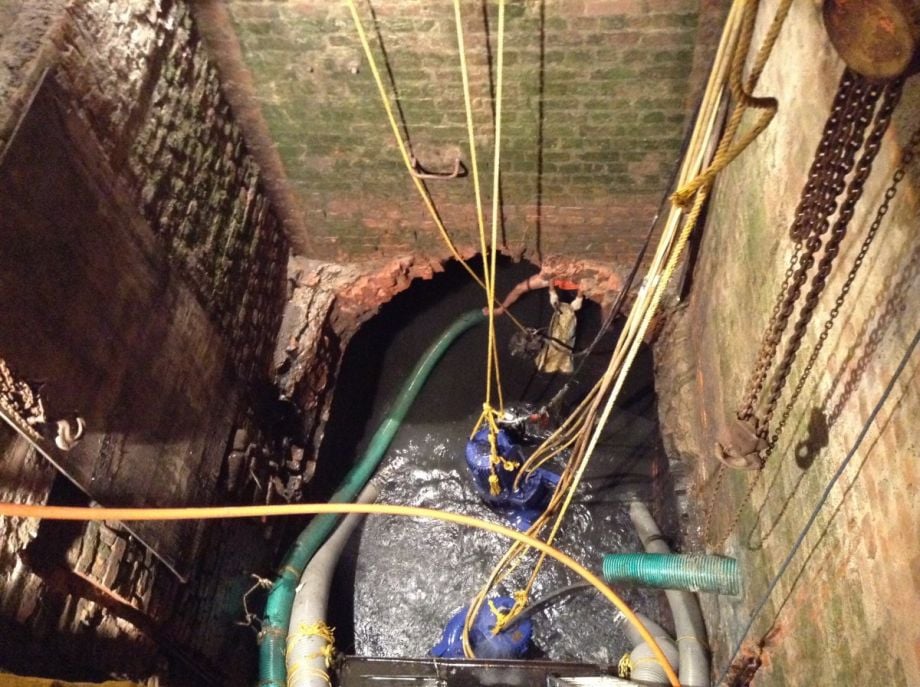
Pumps drain the tunnels so they’ll be dry when engineers line them with GRP.
The shape of these tunnels is an inspired bit of self-sustaining design. “Historically, Kolkata’s sewers were oval or egg shaped to ensure that flow velocities would suffice to keep them clean during dry-weather flows,” says Basu. In addition, they were periodically flushed with water from the nearby River Hooghly during high tide. “However, over time such practices were discontinued, and subsequent siltation diminished sewer capacity and contributed to drainage problems above ground. Further complicating matters… the dramatic increase in impervious pavement that has accompanied Kolkata’s population growth has exacerbated drainage problems throughout the city’s core area.”
In 2006 there were one or two cave-ins – no real maintenance had been performed on the tunnels since they were built well over a century ago – so the desilting operation has been accompanied by structural rehabilitation. Ideally, the KMC would lay additional sewer lines to create redundancy, but for a city with 25,000 residents per square kilometer (and only six percent of its land dedicated to roads) this simply wasn’t feasible. “So we were left with the only alternative of revamping what we already have,” says Basu.
The alternative they chose was glass reinforced polymer (GRP). By lining the tunnels with this material, they sacrificed a bit of capacity. “However,” says Basu, “the smoother surface of the liner in comparison with the original brick surface offers less frictional resistance to flowing water. Therefore, the GRP liner retains the conveyance capacity of the sewer and will be able to accommodate possible flow increases in the future.”
With the project now nearing completion, the KMC engineers seemed to have scripted a huge resilience story in a metropolis that’s crumbling on many fronts.
“Last monsoon, in August, you had 430 millimeters of rainfall in just four days,” says one of the engineers down in the tunnels. “But have you seen the streets flooded for long? No. This is our success story.”


